We asked ten senior HR leaders for their top choices for books to read this summer based on their favorite books. The combined list includes classics as well as new books. We added a few of our own picks. Here’s the list we recommend for Summer 2015 reading! (Alphabetical order.)
Dan Harris, winner of the 2014 Living Now Book Award for Inspirational Memoir, after having a nationally televised panic attack knew he had to make some changes. Harris realized that the source of his problem was the very thing he always thought was his greatest asset: the incessant, insatiable voice in his head that kept him paradoxically vigilant at the expense of a really fulfilling life. 10% Happier takes readers on a ride through Harris’s exploration of “mindfulness,” providing, in the end, great advice for achieving personal and professional satisfaction.
 Act Like a Leader, Think Like a Leader by Herminia Iberra
Act Like a Leader, Think Like a Leader by Herminia Iberra
You aspire to lead with greater impact; however, you can’t seem to get it right. The problem is that you are too busy and focused on the tactical demands of the day-to-day. Herminia Iberra, an expert on professional leadership development and a renowned professor at INSEAD, helps leaders at all levels understand how to step up by making small but crucial changes. She flips the reader from the “think first and then act” mindset to something she calls “outsight”, the external perspective you gain from direct experiences and experimentation.
 Built to Last: Successful Habits of Visionary Companies by Jim Collins and Jerry Porras
Built to Last: Successful Habits of Visionary Companies by Jim Collins and Jerry Porras
This 1994 classic continues to remain on leaders’ must-read lists. This book is based on the authors’ research project at the Stanford University Graduate School of Business to investigate the question, “Why are some companies able to achieve and sustain success through multiple generations of leaders, across decades, and even centuries?” Among the findings are: Preserve the Core/Stimulate Progress, BHAGs (Big Hairy Audacious Goals), and the Genius of the And. Like Good to Great, Built to Last compares great companies to good ones at specific eras in history, and asks, “What systematically distinguishes the great from the average?”
 Daring Greatly: How the Courage to Be Vulnerable Transforms the Way We Live, Love, Parent and Lead by Dr. Brené Brown
Daring Greatly: How the Courage to Be Vulnerable Transforms the Way We Live, Love, Parent and Lead by Dr. Brené Brown
Brené Brown, Ph.D., LMSW is a research professor at the University of Houston Graduate College of Social Work. She has spent the past decade studying vulnerability, courage, worthiness, and shame. This #1 New York Times best seller is not about winning or losing – it’s about courage. Based on 12 years of pioneering research, Dr. Brown dispels the cultural myth that vulnerability is a weakness and argues that it is, in truth, our most accurate measure of courage.
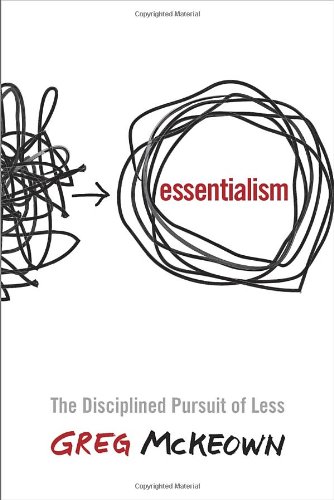 Essentialism: The Disciplined Pursuit of Less by Greg McKeown
Essentialism: The Disciplined Pursuit of Less by Greg McKeown
Essentialism was an instant New York Times and Wall Street Journal best seller — answer these simple questions and you know why. Have you ever found yourself stretched too thin? Do you simultaneously feel overworked and underutilized? Are you often busy but not productive? Do you feel like your time is constantly being hijacked by other people’s agendas? If you answered yes to any of these, the way out is the Way of the Essentialist. It’s not about getting more done in less time. It’s about getting only the right things done. Essentialism is a systematic discipline for discerning what is absolutely essential, then eliminating everything that is not, so we can make the highest possible contribution towards the things that really matter.
 Expect to Win: 10 Proven Strategies for Thriving in the Workplace by Carla Harris
Expect to Win: 10 Proven Strategies for Thriving in the Workplace by Carla Harris
Carla Harris, one of the most powerful and respected women in business and Chairperson of the National Women’s Business Council, shares advice and strategies for surviving in any workplace environment: “Carla’s pearls,” based on her own missteps and numerous victories. This is a very inspiring read. Additionally, her new book, Strategize to Win: The New Way to Start Out, Step Up, or Start Over in Your Career, offers a new approach to conceptualize career strategies and “Carla’s pearls” for successful change.
Exponential Organizations: Why new organizations are ten times better, faster, and cheaper than yours by Salim Ismall, Michael S Malone, and Yuru van Geest
In the past five years, the business world has seen the birth of a new breed of company―the Exponential Organization― capable of accelerating its growth by using technology in innovative ways. Three luminaries of the business world — Salim Ismall, Yuru van Geest and Mike Malone – researched the phenomenon and documented the 10 characteristics of an Exponential Organization. See for yourself why Exponential Organizations was named Frost & Sullivan’s 2014 Growth, Innovation and Leadership book of the year.
 Good to Great: Why Some Companies Make the Leap…And Others Don’t by Jim Collins
Good to Great: Why Some Companies Make the Leap…And Others Don’t by Jim Collins
The #1 best seller, Good to Great, examines why some companies and leaders make the leap to superior results while others don’t. Collins, author of the enduring classic Built to Last, set out to understand how companies can achieve greatness even when they are not born with greatness in their DNA. The study featured in this book studied 1,435 companies over 40 years of which only 11 achieved great, sustained performance. The findings from this study may surprise you and shed new light on every aspect of management. If you haven’t read this best seller, move it to the top of your list!
 Helping, How to Offer, Give and Receive Help, Understanding Effective Dynamics in One-to-One, Group and Organizational Relationships by Edgar H. Schein
Helping, How to Offer, Give and Receive Help, Understanding Effective Dynamics in One-to-One, Group and Organizational Relationships by Edgar H. Schein
Helping is a fundamental human activity. However, many times our sincere offers of help are resented, resisted or refused. In this book, Schein analyzes the social and psychological dynamics common to all types of helping relationships. He uses a variety of examples, both professional and personal. He offers specific techniques to help individuals determine what type of help to offer and how best to offer help in any situation. These techniques apply to all kinds of one-on-one helping relationships, as well as teamwork and organizational leadership.
 Humble Inquiry: The Gentle Art of Asking Instead of Telling by Edgar H. Schein
Humble Inquiry: The Gentle Art of Asking Instead of Telling by Edgar H. Schein
Edgar Schein, a former professor at MIT Sloan School of management, has made significant contributions to the field of organizational development. He believes that communication is essential to a healthy organization. However, many times, when we interact with people (especially those who report to us) we simply tell them what we think they need to know. And it shuts them down. Schein defines ‘Humble Inquiry’ as “the fine art of drawing someone out, of asking questions to which you do not know the answer, of building relationship based on curiosity and interest in the other person.” To foster new ways of working, he suggests that we all need to practice ‘Humble Inquiry’.
 Quiet: The Power of Introverts in a World That Can’t Stop Talking by Susan Cain
Quiet: The Power of Introverts in a World That Can’t Stop Talking by Susan Cain
Touted as “the book that started the Quiet Revolution,” Quiet has been on The New York Times best sellers list for over three years and has been translated into 36 languages. At least one-third of the people we know are introverts: the ones who prefer listening to speaking, innovating and creating by quiet self-promotion, and working on their own over working in teams. Susan Cain argues that corporate cultures dramatically undervalue introverts. She charts the rise of the “extrovert ideal” and explores how deeply it permeates our business culture. This book has the power to permanently change how we see introverts, and equally as important, how they see themselves.
 Scaling Up Excellence: Getting to More Without Settling for Less by Robert I. Sutton and Huggy Rao
Scaling Up Excellence: Getting to More Without Settling for Less by Robert I. Sutton and Huggy Rao
An Inc.com top 10 Best Business Book of 2014 and Financial Times – The Pick of 2014’s Management book, Scaling Up Excellence uncovers what it takes to build and discover pockets of exemplary performance within your organization, to help spread them, and to keep recharging the organization with ever better work practices. In this book, Sutton and Rao reveal how the best leaders and teams develop, expand , and instill the right mindsets in their people.
 Succession Management – The “How To” Puzzle – Solved! by Mark Caruso
Succession Management – The “How To” Puzzle – Solved! by Mark Caruso
This is a practical resource for any HR Organization. Mark Caruso, a succession management expert, has created an easy to use “How To” book focused on having the right leaders in the right places at the right time. Caruso describes this process as similar to a puzzle. He shares what he calls the “double whammy”. Whammy #1: Misdirected Development Time and Money, and Whammy # 2: Successors who are not prepared for the role when it becomes available. This is a good go-to guide for improving or enhancing your succession-planning process.
 Switch: How to Change Things When Change is Hard by Dan & Chip Heath
Switch: How to Change Things When Change is Hard by Dan & Chip Heath
The Heaths did it again with this one! This book is a follow up to the acclaimed Made to Stick, a previously written book by this talented team. Switch was featured in both the New York Times and the Wall Street Journal. The book asks a fundamental question: “why is it so hard to make lasting changes in our companies, in our communities, and in our own lives?” The Heaths say that the primary obstacle comes from a conflict within our own brains. In a compelling narrative the Heaths shed new light on how we can effect lasting change.
 The 2020 Workplace: How Innovative Companies Attract, Develop, and Keep Tomorrow’s Employees Today by Jeanne Meister and Karie Willyerd
The 2020 Workplace: How Innovative Companies Attract, Develop, and Keep Tomorrow’s Employees Today by Jeanne Meister and Karie Willyerd
Human resources experts Jeanne Meister and Karie Willyerd believe the workplace of tomorrow is being shaped today, driven primarily by globalization, the introduction of new ways of working, the use of emerging technologies, and shifting workforce demographics. Their key findings are based on data from two surveys of global professionals, as well as case studies from organizations such as Cisco, Bell Canada, JetBlue, Nokia and NASA.

“Organizational health will one day surpass all other disciplines in business as the greatest opportunity for improvement and competitive advantage.” This is the promise of The Advantage, Patrick Lencioni’s bold manifesto about the most unexploited opportunity in modern business. Instead of trying to become smarter, he asserts that leaders and organizations need to shift their focus to becoming healthier, allowing them to tap into the more-than-sufficient intelligence and expertise they already have. Lencioni is known for his best selling business fables The 5 Dysfunctions of a Team and Death by Meeting. He forgoes fables in The Advantage, and draws on his 20 years of writing, research, and executive consulting to deliver his most comprehensive work to date.
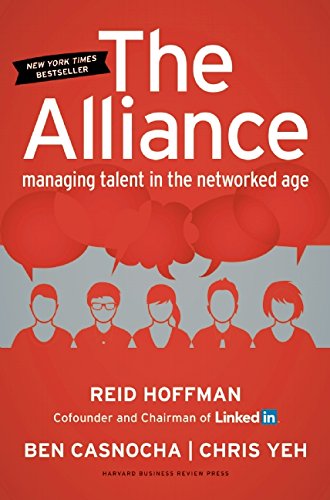 The Alliance: Managing Talent in the Networked Age by Reid Hoffmann, Ben Casnocha, and Chris Yeh
The Alliance: Managing Talent in the Networked Age by Reid Hoffmann, Ben Casnocha, and Chris Yeh
We all know the employer-employee relationship is broken or badly damaged. . Managers today face the impossible dilemma: the old model of guaranteed long-term employment no longer works in a continuously changing business environment, but neither does a system in which every employee acts like a free agent. This book, coauthored by the founder of LinkedIn, proposes that we stop thinking of employees as either family or as free agents. They suggest that instead we should think of employees as allies and build a pragmatic “loyalty pact” with them.
 The Boys in the Boat: Nine Americans and Their Epic Quest for Gold at the 1936 Berlin Olympics by Daniel James Brown
The Boys in the Boat: Nine Americans and Their Epic Quest for Gold at the 1936 Berlin Olympics by Daniel James Brown
In this story, Brown created an unforgettable portrait of an era, a celebration of a remarkable achievement, and a chronicle of one extraordinary young man’s personal quest. The story is based on the University of Washington’s 1936 eight-oar crew and the epic quest for an Olympic gold medal. It’s a story about beating the odds and finding hope in the most desperate of times. The crew is assembled by an enigmatic coach and mentored by a visionary, eccentric British boat builder, but it is the crewmembers’ trust in each other that makes them a victorious team. They remind the country of what can be done when everyone quite literally pulls together—a perfect melding of commitment, determination, and optimism.
 The Improvisation Edge by Karen Hough
The Improvisation Edge by Karen Hough
The Improvisation Edge isn’t your ordinary business book. Hough brings a fresh approach to succeeding at work through well-articulated advice for building trust and teamwork. This book draws on ideas put forth by knowledge experts in trust building, defining the “improvisational stage.” Hough, a professional improviser and actor, describes four secrets to help leaders, teams, and employees adopt an “improviser’s mindset” and offers a hands-on way to build a successful organizational culture.
 The Purpose Economy: How Your Desire for Impact, Personal Growth and Community Is Changing the World by Aaron Hurst
The Purpose Economy: How Your Desire for Impact, Personal Growth and Community Is Changing the World by Aaron Hurst
A series of shifts are happening in our economy. A record number of millennials are trading conventional career paths to launch tech start-ups, start small businesses that are rooted in local communities, or freelance their expertise. Like the information economy, which has driven innovation and economic growth until now, Hurst, CEO of 2001 start-up Taproot, argues that this new economic era is driven by connecting people to their purpose. “It’s an economy where value lies in establishing purpose for employees and customers—through serving needs greater than their own, enabling personal growth, and building community.”
 The Road to Character by David Brooks
The Road to Character by David Brooks
The Road to Character is for every one of us who is trying to become a better version of ourselves. It is about shifting the cultural conversation, to sharing stories of moral adventure, and learning from each other’s examples.. In this #1 New York Times best seller, Brooks looks at some of the world’s greatest thinkers and inspiring leaders, and explores how, through internal struggle and a sense of their own limitations, they have built a strong inner character.
 Thrive: The Third Metric to Redefining Success and Creating a Life of Well-Being, Wisdom, and Wonder by Arianna Huffington
Thrive: The Third Metric to Redefining Success and Creating a Life of Well-Being, Wisdom, and Wonder by Arianna Huffington
In Thrive, Arianna Huffington makes an impassioned and compelling case for the need to redefine what it means to be successful in today’s world. There is far more to living a truly successful life than just earning a bigger salary and capturing a corner office. Drawing on the latest groundbreaking research and scientific findings in the fields of psychology, sports, sleep, and physiology that show the profound and transformative effects of meditation, mindfulness, unplugging, and giving, Arianna shows us the way to a revolution in our culture, our thinking, our workplace, and our lives.
 To Sell is Human by Daniel Pink
To Sell is Human by Daniel Pink
According to the U.S. Bureau of Labor Statistics, 1 in 9 Americans work in sales. When you dig deeper, a startling truth emerges: so do the other 8. In this book, Daniel Pink, the best selling author of Drive and A Whole Mind, explores the power of selling in our lives. This book is packed with practical insights, three rules for understanding other’s perspectives, and five frames that can make your message clearer and more persuasive.
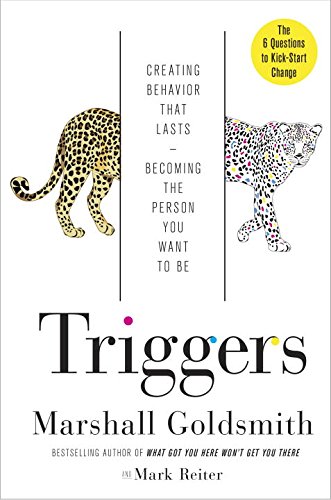 Triggers: Creating Behavior That Lasts–Becoming the Person You Want to Be by Marshall Goldsmith and Mark Reiter
Triggers: Creating Behavior That Lasts–Becoming the Person You Want to Be by Marshall Goldsmith and Mark Reiter
A recent addition to the New York Times and Wall Street Journal best sellers list, world-renowned executive coach Marshall Goldsmith examines the environmental and psychological triggers that can derail us at work and in life. Goldsmith and Reiter emphasize that our reactions don’t occur in a vacuum. They are usually the result of unappreciated triggers in our environment—the people and situations that lure us into behaving in a manner different from the colleague, partner, parent, or friend we imagine ourselves to be. They show how we can overcome the trigger points in our lives and enact meaningful and lasting change.
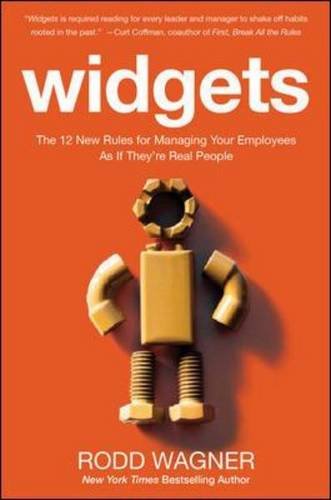 Widgets: the 12 New Rules for Managing Your Employees As If They’re Real People by Rodd Wagner
Widgets: the 12 New Rules for Managing Your Employees As If They’re Real People by Rodd Wagner
“Your people are not your greatest asset. They’re not yours, and they’re not assets.” In fact they are not human resources, FTEs, or human capital. They are real people. Wagner, a New York Times bestselling author and Forbes contributor, tackles the breakdown of the social contract between people and the organizations where they work. Widgets introduces 12 imperatives that are company “investments”, which can be used to create the real asset which he calls “employee intensity.”

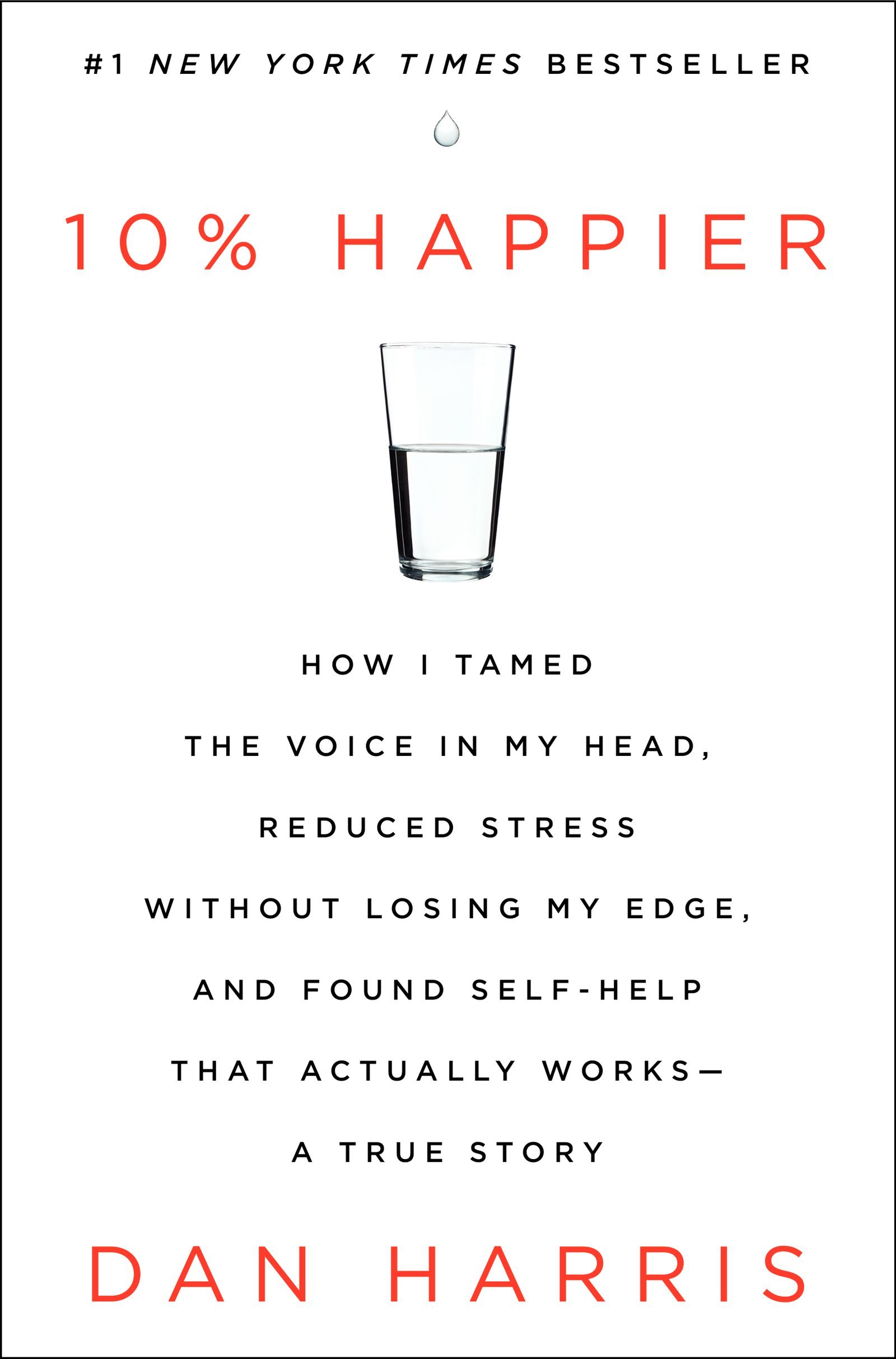 10% Happier: How I Tamed the Voice in My Head, Reduced Stress Without Losing My Edge, and Found Self-Help That Actually Works–A True Story
10% Happier: How I Tamed the Voice in My Head, Reduced Stress Without Losing My Edge, and Found Self-Help That Actually Works–A True Story




